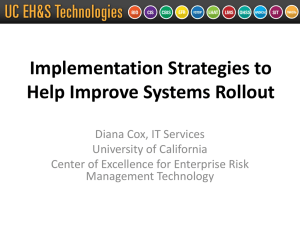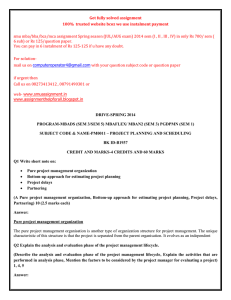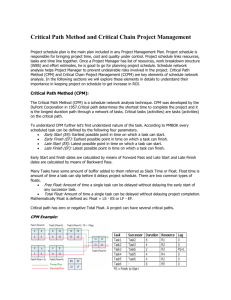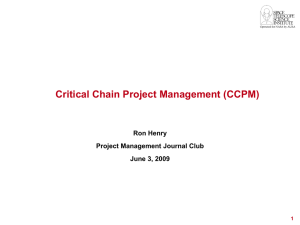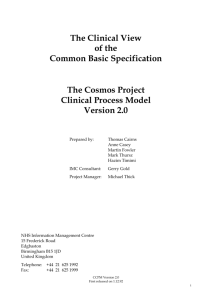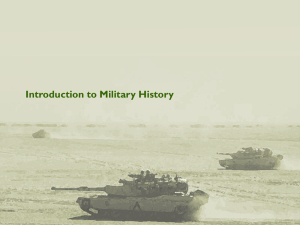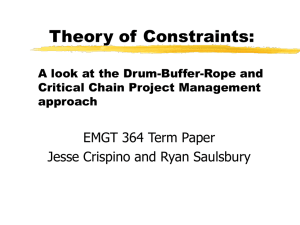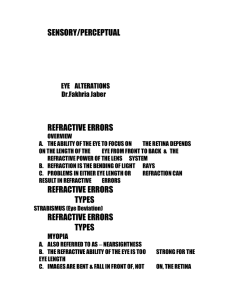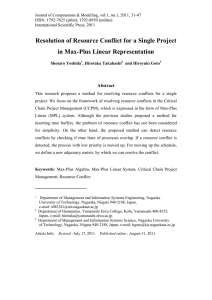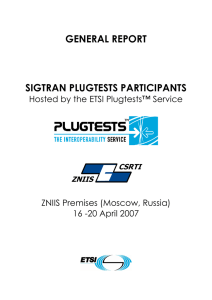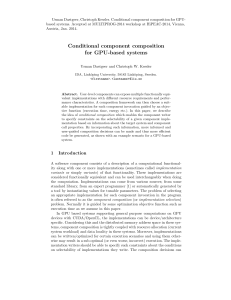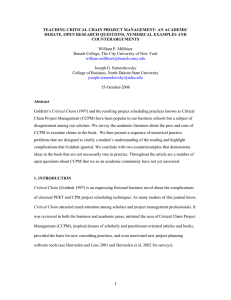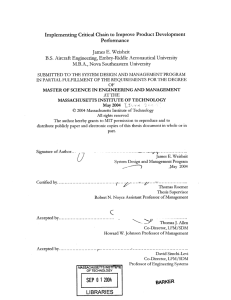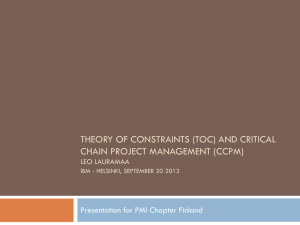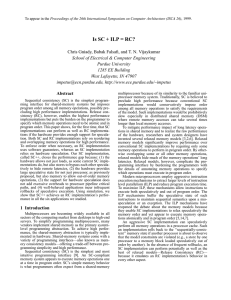A failed Implementation Leads to an Evolution
advertisement
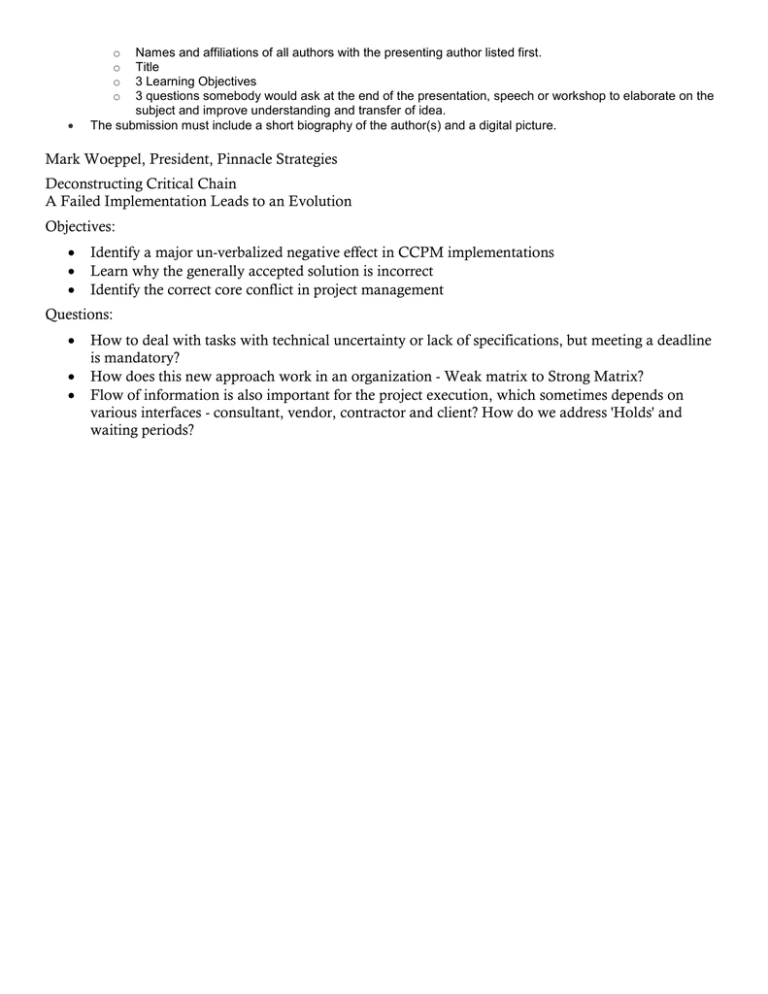
o o o o Names and affiliations of all authors with the presenting author listed first. Title 3 Learning Objectives 3 questions somebody would ask at the end of the presentation, speech or workshop to elaborate on the subject and improve understanding and transfer of idea. The submission must include a short biography of the author(s) and a digital picture. Mark Woeppel, President, Pinnacle Strategies Deconstructing Critical Chain A Failed Implementation Leads to an Evolution Objectives: Identify a major un-verbalized negative effect in CCPM implementations Learn why the generally accepted solution is incorrect Identify the correct core conflict in project management Questions: How to deal with tasks with technical uncertainty or lack of specifications, but meeting a deadline is mandatory? How does this new approach work in an organization - Weak matrix to Strong Matrix? Flow of information is also important for the project execution, which sometimes depends on various interfaces - consultant, vendor, contractor and client? How do we address 'Holds' and waiting periods? Deconstructing Critical Chain A Failed Implementation Leads to an Evolution What are the core components of critical chain project management? Should we accept the “generally accepted” solution as being the best or correct solution? The main experience in CCPM speaks to revising task estimation and buffering strategies, establishing the roadrunner task completion behaviors, buffer driven priorities and changing the measurements (to what?) to facilitate the above. The planning processes have historically driven implementation tactics, with an emphasis on software, network building, and education. Successful changes have been built on strong leadership and technical skills. With the holistic implementations, there was an impetus to deliver results sooner and the strategy and tactics approach for projects was created. This was a major breakthrough in the implementation approach, exposing many of the change management obstacles and requirements to make the initiative successful. Many implementers and practitioners use the S&T to improve the speed and quality of their implementations. Still, there is an emphasis on planning and software, so, while there are some results coming much faster, the obstacles of software adoption and learning how to plan using probabilities and buffers remain. If we use the “traditional” approach or the currently accepted S&T for projects, there is an undesirable effect – portfolio and senior executives do not see direct benefits until a critical mass of projects come into the new process. The benefits are organizational; there is little in the process for these executives to improve their managerial effectiveness, and thus, their engagement in the management process is limited and distant. Without this engagement, many implementations fail to realize their potential. In this presentation, we are going to show that the core problem that CCPM solves has little to do with planning. Focusing the transformation initiative on the correct conflict and assumptions immediately engages senior and portfolio managers into the day-to-day process of project execution, improving the decision processes at the senior level, enabling leadership to drive their business, and incorporating the entire organization into the process in a matter of weeks.
